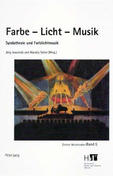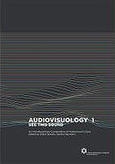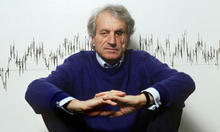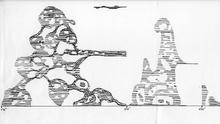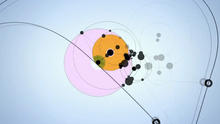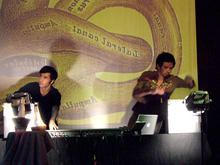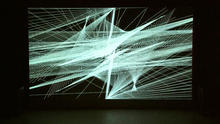n-Polytope
(2012)by Chris Salter is a large-scale audiovisual performance-installation employing today’s existing technology to reinterpret and adapt the spectacular architectural environments imagined by the Greek architect and composer Iannis Xenakis.
The design and final construction of the installation by Chris Salter, who is exhibiting his artwork for the first time in Spain, was made possible by an alliance of collaborating between entities and institutions from different countries, with the Centro de Arte y Creación Industrial acting as the unifying agent. In this way, the coproduction between LABoral and the Canadian studio-laboratory LabXModal has been complemented by the financial support of Fonds de recherche du Québec-Société et culture [Quebec Research Fund for Society and Culture](FQRSC), Canada, by the German engineering consulting firm Schlaich Bergermann & Partner, by STEIM (STudio for Electro Instrumental Music) from the Netherlands and by the Spanish company Fomento de Construcciones y Contratas.
n-Polytope: Behaviors in Light and Sound after Iannis Xenakis is a contemporary re-imagining of the Greek composer and architect Iannis Xenakis’s radical architectural environments called Polytopes (from the Greek poli, ‘many’ and topos, ‘space’). The first of these spaces, articulated through light and sound, was presented at the Expo'67 in Montreal and subsequently in Europe and the Middle East in the 1970s and 80s. Through the temporal dynamics of light and sound, these installations evoke the indeterminate and chaotic behaviour of nature: rivers, clouds, waves and cosmological phenomena. Reinventing these polytopes goes far beyond a simple historical exercise given that they represent seminal works in the history of new media and of which, still to this day are little known outside of contemporary music circles.
Iannis Xenakis creation of dense artistic experiences that fundamentally analyse and model the behaviour and patterns of nature and the cosmos in their fluctuations between order and disorder evoke, without doubt, the instability of the present moment. The visitor will thus enjoy a strange, flickering, unstable experience; one of intense beauty achieved by the light and sound-constructed ambience. (...)
Chris Salter is an artist, Associate Professor for Design + Computation Arts at Concordia University in Montreal and Director of the Hexagram Concordia Centre for Research-Creation in Media Arts and Technology.
He studied philosophy, economics, theatre and computer music at Emory and Stanford Universities. After collaborating with Peter Sellars and William Forsythe/Ballett Frankfurt, he co-founded and directed the art and research organization Sponge (1997-2003). His solo and collaborative work has been seen all over the world at such venues as the Venice Architecture Biennale, National Art Museum of China, CTM, Ars Electronica, Meta. Morf in Norway, PACT Zollverein, Todays Art, Villette Numerique, EMPAC, Transmediale, EXIT Festival, Place des Arts, Elektra, Shanghai Dance Festival, V2_, among many others. He is the author of Entangled: Technology and the Transformation of Performance (MIT Press, 2010).
Source: La Laboral. Centro de Arte y Creación Industrial
